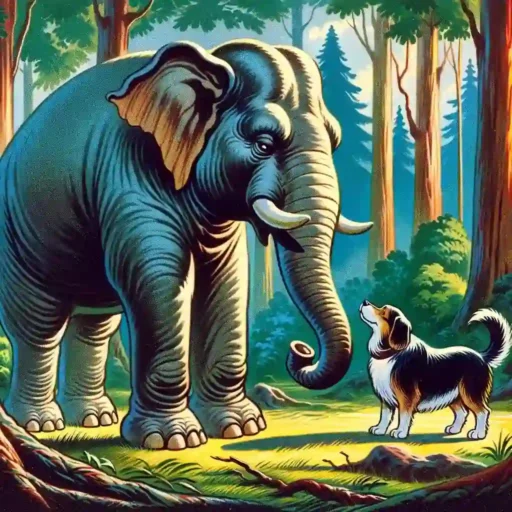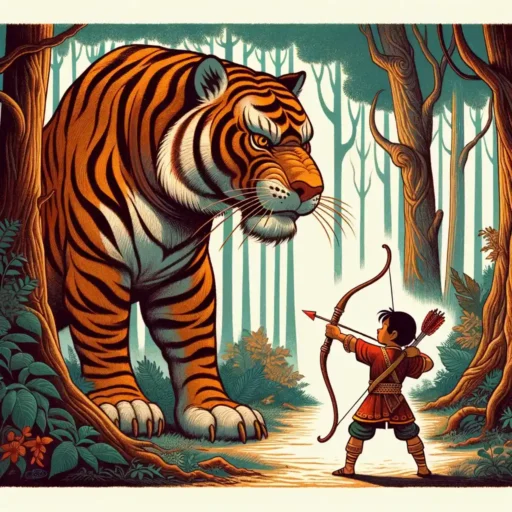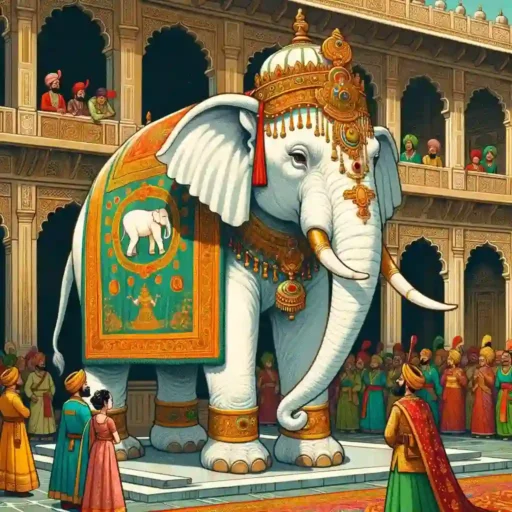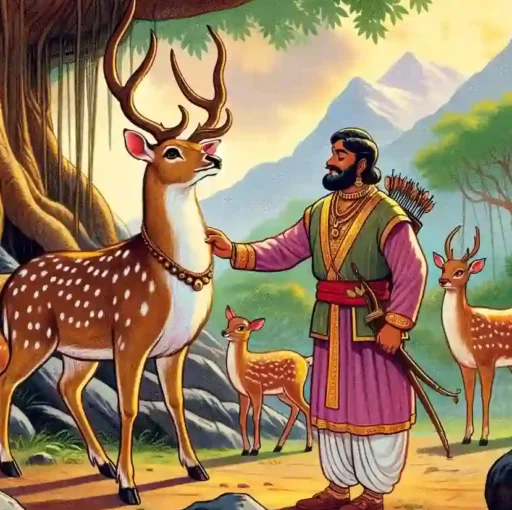The Jataka Tales
The Jataka Tales, known as “Jatak Katha” in Hindi, are a cherished collection of stories that narrate the previous lives of Lord Buddha. These tales, originally told in the Pali language and later translated into Sanskrit, date back to between 300 BC and 400 AD. Comprising 550 stories, they are an essential part of Buddhist literature, designed to impart moral values based on the life and incarnations of Buddha.
Buddha, who was once Prince Siddharth Gautam, embarked on a journey of self-discovery at the age of 29 after witnessing the sorrows of the world. He renounced his royal life in search of truth and peace, eventually sharing his insights through stories. These tales, which include his incarnations as various animals and humans, teach lessons of self-sacrifice, honesty, and morality. Animals, particularly elephants, play a significant role in these narratives, making them particularly appealing to children.
For children, the Jataka Tales are more than just engaging stories. They serve as a tool for moral and ethical development, introducing young minds to concepts of kindness, compassion, and wisdom. These stories encourage children to think about right and wrong, fostering a sense of empathy and understanding towards others.
Additionally, the Jataka Tales in english provide an accessible and enjoyable way for children to improve their language skills. Reading Jatak tales can enhance vocabulary, comprehension, and narrative skills, all while immersing them in rich cultural and historical contexts.
Jatak Tales: The Elephant and The Dog

There was an elephant who lived in a royal forest. One day, a stray dog entered the forest and started living near the elephant’s shed. They soon became friends, eating together and spending time with each other. The elephant shared his food with the dog, and they were very happy.
A local man noticed the dog’s condition improving and bought it from the elephant’s mahout. However, the elephant became very sad and stopped eating. Seeing the elephant’s condition, the king summoned his ministers to find the cause. One wise minister found out about the dog and brought it back.
The elephant was overjoyed to see his friend and started to eat again. The king, impressed by their friendship, allowed the dog to stay with the elephant. The story teaches us about the strength of friendship and how it knows no bounds, not even between different species.
Jatak Tales: The Brave Little Bowman

There was a brave little bowman who lived in a village near a forest. The villagers were terrified of a huge tiger that often came out of the forest. They tried many times to capture it, but the tiger was too fierce and powerful.
The little bowman, though small in size, was known for his bravery and skill with the bow and arrow. He decided to face the tiger. Armed with his bow and arrows, he went into the forest. When he found the tiger, he was not afraid. He stood firm and aimed his arrow at the tiger.
The tiger, seeing the brave little bowman, realized that he was no ordinary man and decided to retreat. The bowman’s courage saved the village from the tiger.
This story teaches that courage is not about size or strength but about the will to face fears and challenges. The brave little bowman became a hero among his people, celebrated for his bravery and skill.
Jatak Tales: The King’s White Elephant

There was a magnificent white elephant that lived in the forests of India. This elephant was not ordinary; he possessed great wisdom and a kind heart. His beautiful white color made him stand out from the other elephants.
The King of Benares heard about this extraordinary elephant and decided he must have it. He sent his men to capture it, and the white elephant was brought to the royal palace. The elephant was treated with great respect and was adorned with luxurious decorations.
However, the elephant was unhappy being away from his home in the forest. Seeing this, the king realized that even though he was powerful, he could not make the elephant happy. The king decided to release the elephant back into the forest, understanding that true happiness comes from freedom and living in one’s natural habitat.
This story teaches us about respect for all living beings and the importance of understanding and empathy. The white elephant’s wisdom and the king’s final decision highlight the virtues of kindness and compassion.
Jatak Tales: The Banyan Deer

There was a beautiful golden deer, known as the Banyan Deer, who was the king of a herd. He was known for his compassion and wisdom. Nearby lived another herd of deer with its own king. One day, the human king of the region decided to hunt these deer and caught many of them in a trap.
To avoid hunting every day, the human king made a rule that one deer from each herd would willingly come to the royal hunting ground to be his prey. When it was the turn of a pregnant doe from the Banyan Deer’s herd, the Banyan Deer offered himself in her place.
The human king, moved by the Banyan Deer’s nobility and self-sacrifice, was brought to tears and not only spared the Banyan Deer but also declared the royal hunting grounds a safe place for all deer from that day on.
This story teaches the virtues of compassion, self-sacrifice, and the respect for life, showing how one act of kindness and bravery can lead to great change.
Jatak Tales: The Three Fishes

There were three fishes living in a pond. Each fish had a different approach to life: one was wise, one was clever, and the third was ignorant. One day, they overheard fishermen planning to fish in their pond the next day.
The wise fish, upon hearing this, decided to leave the pond immediately and swim to another water body. It believed in taking action at the first sign of danger. The clever fish decided to come up with a plan to escape the net when the fishermen came. However, the ignorant fish chose to do nothing, believing that what was destined to happen would happen.
The next day, the fishermen arrived and cast their nets. The clever fish played dead and was thrown back into the pond, thus escaping. However, the ignorant fish got caught and met its end.
This story teaches the importance of taking timely action and being wise in the face of danger. It shows that different approaches can lead to different outcomes, emphasizing the value of wisdom and foresight.
Jatak Tales: The Hawks And Their Friends

Two hawks lived together in a tree in a forest. They had three friends – a tortoise, a deer, and a crow. The five of them shared a strong bond and looked out for one another.
One day, a hunter came to the forest and trapped the deer. The hawks saw their friend in danger and quickly devised a plan to save him. The crow flew to the hunter’s camp and distracted him, while the hawks and the tortoise worked together to free the deer from the trap.
The tortoise bit through the ropes of the trap, and the hawks helped the deer to escape. The crow’s distraction gave them enough time to carry out their rescue mission successfully. In the end, their teamwork and the strength of their friendship saved the deer from the hunter.
This story teaches the value of friendship and cooperation. It shows that when friends work together and use their unique abilities, they can overcome even the most challenging obstacles.
Jatak Tales: The Cunning Wolf

There was a wolf who lived in a forest and was notorious for his cunning ways. He was always looking for ways to trick the other animals to satisfy his hunger.
One day, the wolf devised a clever plan. He pretended to be dead and lay on the path where the other animals usually wandered. As a rabbit came along, it saw the wolf and thought he was dead. The rabbit approached cautiously, and just as it came close, the wolf pounced and caught the rabbit.
This trick worked for the wolf many times, as several animals fell for his deception. However, one day a clever fox came by and noticed the wolf. The fox, being wise to the wolf’s tricks, carefully observed the wolf’s chest and saw it rising and falling with breath.
The fox then alerted the other animals to the wolf’s deceit. From that day on, the animals became more cautious and the wolf could no longer trick them.
This story teaches us to be wary of deceit and to think critically about the situations we encounter. It also illustrates how cunning can be outwitted by wisdom and alertness.

